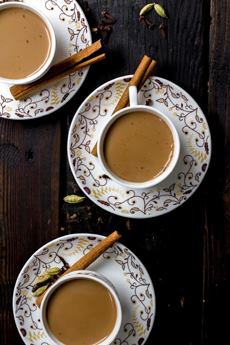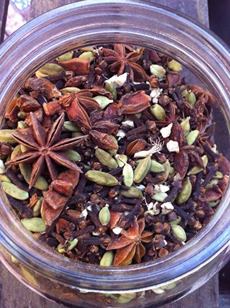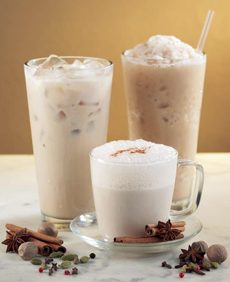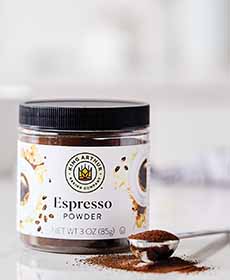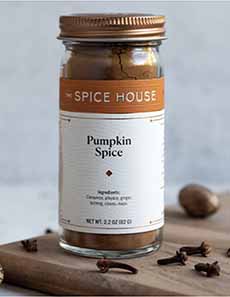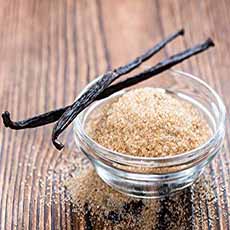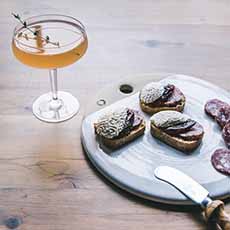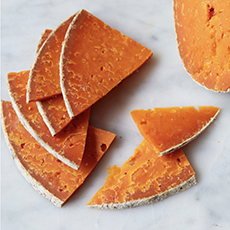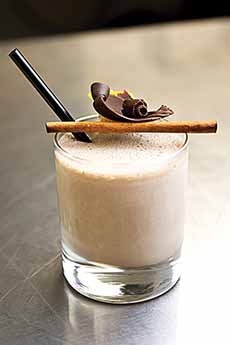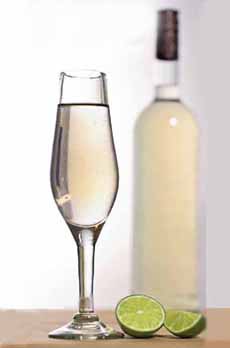|
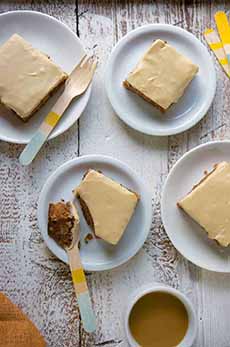
[1] A simple scrumptious cake for National Apple Month (photo © King Arthur Baking).
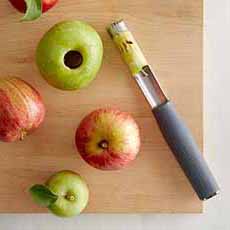
[2] Some bakers recommend using a mix of apple varieties in cakes and pies (photo © Williams Sonoma).
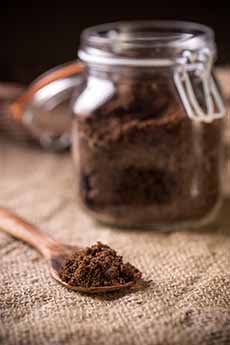
[3] Brown sugar has a deep, caramel or toffee-like flavor due to the added molasses, which adds more richness to fruit and chocolate cakes and cookies.
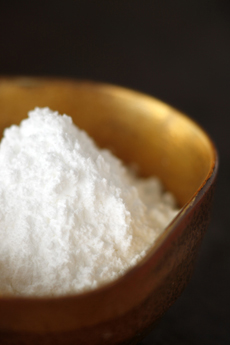
[4] Regular sugar has a larger crystal size than powdered sugar (a.k.a. confectioners’ or 10x sugar. It thus dissolves more readily (photo Katherine Pollak | © The Nibble).
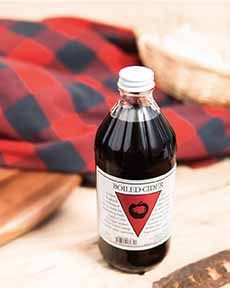
[5] Boiled cider is a thick syrup made by boiling down apple cider. It is used instead of molasses or honey to deliver more apple flavor to a recipe (photo © Cheese & Wine Traders).

[6] Apple pie spice is a blend of cinnamon, ginger, and nutmeg. There’s a recipe to mix your own below (photo © Jamie of My Baking Addiction, who also uses cardamom).
|
|
Nothing says Fall like the apple varieties piled up at farmers markets. October is National Apple Month, October 21st is National Apple Day, and here’s what we baked: an old-fashioned apple cake with brown sugar frosting.
The frosting is like a thin layer of brown sugar fudge or penuche. The moist cake can be as fine or chunky as you like, depending on how you slice the apples.
Thanks to King Arthur Baking for this wonderful treat, a new family favorite at our home.
Prep time is 20 minutes, and bake time is 42 to 47 minutes.
WHAT APPLES SHOULD YOU USE FOR APPLE CAKE?
According to Stemilt, the key to a great apple cake is to use a diverse variety of apples.
Why a variety? It gives you a mix of textures and flavors: sweet, tart, crisp, and soft. Stemilt suggests:
A mixture of Granny Smith and Honeycrisp if you prefer your cake more tart.
A mixture of Fuji and Gala if you prefer a sweeter experience.
Of course, you can use just one apple variety.
For the best apples for any particular recipe, head to AppleForThat.Stemilt.com.
> The history of apples.
> The difference between frosting, icing, and glaze.
RECIPE: OLD-FASHIONED APPLE CAKE WITH BROWN SUGAR FROSTING
This recipe makes one e 9″ x 13″ cake. The same recipe will make 24 cupcakes.
For a cake with more texture, leave the peels on the apples, and chop them coarsely rather than finely.
Ingredients For The Cake
2-1/3 cups (280g) unbleached all-purpose flour
1-2/3 cups (330g) granulated sugar
2 teaspoons baking soda
3/4 teaspoon salt
1-1/2 teaspoons apple pie spice-or-1 teaspoon cinnamon + 1/4 teaspoon each ginger and nutmeg
2 large eggs, at room temperature
8 tablespoons (113g) unsalted butter, softened
4 cups (425g) peeled, cored, finely chopped apples (1/4″ to 1/2″), about 1-1/3 pounds whole apples
2 tablespoons (43g) boiled cider
1 cup (113g) walnuts or pecans, toasted* and diced
For The Frosting
For a lower-sugar frosting, which we personally prefer, use between 1-1/2 cups (171g) to 1-3/4 cups (200g) confectioners’ sugar and 2 tablespoons of milk.
7 tablespoons (99g) butter
2/3 cup (142g) light brown sugar or dark brown sugar, packed
1/4 teaspoon salt
1/4 cup (57g) milk or 2 tablespoons (28g) milk + 2 tablespoons (43g) boiled cider
2-1/4 cups (255g) confectioners’ sugar, sifted
3/4 teaspoon pure vanilla extract
Preparation
1. PREHEAT the oven to 325°F. Lightly grease a 9″ x 13″ pan or two 8″ round pans.
2. MAKE the batter. Mix all of the ingredients except the apples and nuts in a large bowl. As soon as the mixture comes together and becomes pretty uniformly crumbly, stop mixing (or it will turn into a cohesive mass).
3. ADD the apples, boiled cider, and nuts, and mix until the apples release some of their juice and the stiff mixture becomes a thick, creamy batter, somewhere between cookie dough and brownie batter in consistency. Don’t worry if the mixture doesn’t immediately loosen up; this will take about 3 minutes at low speed in a stand mixer.
4. SPREAD the batter in the prepared pan(s), smoothing it with your wet fingers. Bake the cake for 45 minutes for a 9″ x 13″ pan or for 38 minutes in two 8″ round pans. A toothpick or paring knife inserted into the center should come out clean, or with just a few wet crumbs clinging to it. The temperature at the center of the cake will be about 205°F.
5. REMOVE the cake from the oven and place it on a rack to cool a bit while you make the frosting.
6. MAKE the frosting: Sift the confectioners’ sugar into a bowl or onto a piece of parchment or wax paper; set it aside. (Sifting guarantees a lump-free frosting.)
7. MELT the butter in a medium-sized saucepan over medium heat. Stir in the brown sugar and salt and cook, stirring, until the sugar starts to melt and the mixture becomes fairly smooth. While you may still notice a bit of grittiness from the sugar, you shouldn’t see any melted butter pooled atop the sugar. Add the milk and boiled cider, and bring to a boil.
8. REMOVE the syrup from the heat and pour it into a medium-sized mixing bowl (large enough to accommodate the confectioners’ sugar). Let the syrup cool in the bowl for 10 minutes.
9. POUR the confectioners’ sugar into the warm syrup in the bowl, then add the vanilla extract. Whisk until everything is thoroughly combined. You need to work fast here; the frosting stiffens up quickly as it cools.
10. POUR the warm frosting onto the cake(s), spreading it over the entire surface.
11. CUT the cake—either warm or at room temperature—into slices to serve. Store the cake, covered, at room temperature for several days; freeze for longer storage.
________________
*To toast the nuts, place them in a single layer in a cake pan. Bake in a preheated 350°F oven for 6 to 9 minutes, until they’re golden brown and smell “toasty.” Or, you can dry-fry them (no oil) in a skillet set over medium heat. Done this way they can go from perfectly browned to burned quickly, so keep your eye on them.
|
